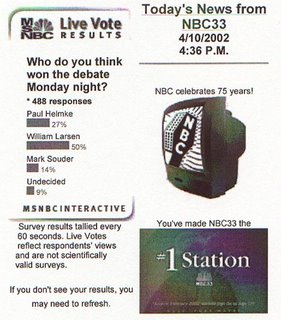What Went Wrong?
A.J. Altmeyer, Chairman a member of the Social Security Board testified before the House Ways and Means Committee on November 27, 1944
“There is no question that the benefits promised under the present Federal old-age and survivors insurance system will cost far more than the 2 percent of payrolls now being collected… Indeed, under certain assumptions the level annual cost has been estimated to be as much as 7 percent of payrolls. … On the basis of 7-percent-level annual cost it may be said that the reserve fund already has a deficit of about $16,500 million.”
Alan Greenspan stated raising taxes to pay future Social Security and Medicare benefits pose a risk to the overall economy. Greenspan now says future benefit cuts are needed over tax increases.
President Bush spent a year pushing his plan for Social Security.
Robert Ball, a commissioner of Social Security between 1962 and 1973 wrote in June 2005
“When Social Security began, benefits for those nearing retirement age were much higher than could have been paid for by the contributions of those workers and their employers. This was done so that the program could begin paying meaningful benefits even though workers nearing retirement would have only a short time to contribute.”
How do you identify the problem?
“The first is to present the drop in the workers-to-beneficiary ratio as very large and unplanned for. They point out that in 1950 there were 16 workers paying into the system for each beneficiary taking out, and that the ratio has gone way down so that now the ratio is only 3.3 workers to each beneficiary and in the long run it will be only 2 to 1 or even 1.9 to 1. They ignore the fact that in 1950 only about 15 percent of the elderly were eligible for benefits and that it was expected by all who were acquainted with the program that the ratio would, of course, change dramatically as a greater proportion of the elderly became beneficiaries.
Instead, the impression is left that the program was sound only when 16 paid in for every one taking out. Thus, of course, when the ratio changed to 3.3 to 1, the program became "unsustainable." What in fact happened is that when just about all the elderly first became eligible for Social Security benefits, about 1975, the ratio was 3.3 contributors to each beneficiary and the ratio has stayed that way for the past 30 years. As the baby boom reaches retirement age, as the administration says, the ratio is expected to drop for the long run to 2.0 or 1.9 workers to each retiree. But that is the size of the problem-a drop from 3.3 to 2 workers per retiree. The much used 16 to 1 figure is simply a reflection of the immaturity of the system back in 1950 when very few of the elderly had worked under the program long enough to be eligible for benefits.”
Altmeyer asked for reform in 1944 and predicted what was going to happen if they did not fix Social Security. Ball identified Social Security was immature in 1950. It takes over 30 years for a worker to become a beneficiary. This means the program would not mature until 1980 while all this time promising far more than it could pay. Those acquainted with the program (congress and presidents) knew of this problem, but looked the other way. Simple math tells you a drop in the worker to beneficiary ratio of 3.3 to 2 reduces revenues by 40%. This requires a 40% cut in benefits or a tax increase of 65%.
A program that pays those born after 1985 just 29 cents back for each dollar of taxes and credited interest is not fair. Americans want value for their dollar. You can buy a value meal at about any fast food chain consisting of a sandwich, fries and drink for about $4.00. If Social Security were a value meal, it would cost $13.79. The American worker deserves value for their Social Security tax dollars.
62 years later we are seeing the seeds of inaction by congress come to fruition. Does social security affect you? Do you want another 62 years worth of talk or do you want action?



0 Comments:
Post a Comment
<< Home